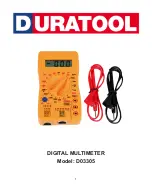
342-86400-498PS
Issue 1.2
April 2012
Page 31
Copyright
GE Multilin Inc. 2010-2012
Q-Access Ports
Each Q-Access (QA) port has a single D-PVLAN membership and a single
QVLAN membership (the Default QVLAN ID, which is user-configurable). These
ports can
exchange traffic only with remote QA and QT ports (with matching D-
PVLAN and QVLAN memberships).
Ingress of untagged frames can be enabled (default) or disabled. If enabled, the
port‟s Default QVLAN ID (configurable for a value between 1 (default) and 4000)
is assigned to these frames. Ingress of tagged frames is normally disabled
(default), but if enabled, only those ingressing frames tagged with the VID
matching the Default QVLAN ID will be processed.
Only the frames matching the port‟s D-PVLAN and QVLAN membership are
allowed to egress. The port can be set to remove the (outer) tag of all egressing
tagged frames (the
“Untag” option), to add a tag with respective remote Default
QVLAN ID to all egressing untagged frames (the
“Tag” option), or to keep the
egressing frames unchanged with respect to their far-end ingress (the
“No
Change” option).
An application that can be addressed with QA ports is shown in Figure 18.
16
QA
JMUX Ring 1
JungleMUX Ring
QA
QA
1
1
1
QA
QA
1
1
101
102
102
102
102
INGRESS
Default QVLAN ID=102
EGRESS
Output Tagging:
- Untag (pop) if drop device is "native".
- Tag (push) if drop device is
“Dot1Q”.
-
„No Change‟ if all egressing frames (tagged or
untagged) must be delivered unchanged with
respect to far-end ingress.
NOTE: If Q-trunking is used somewhere within
the same D-
PVLAN (see next slide), „No Change‟
can be used as an alternative to 'Tag' if only
tagged frames appear on all ports.
QA
1
101
D-PVLAN membership
QVLAN membership
Figure 18:
Multiple VLANs within a single D-PVLAN (one VLAN per port)
16
If duplicate MACs are not used anywhere in the network, this application is supported by
ETHER-1000 V2. It is also supported by ETHER-1000 V1 if only tagged frames appear on all
ports (assuming use of non-Default QVLAN ID).
















































